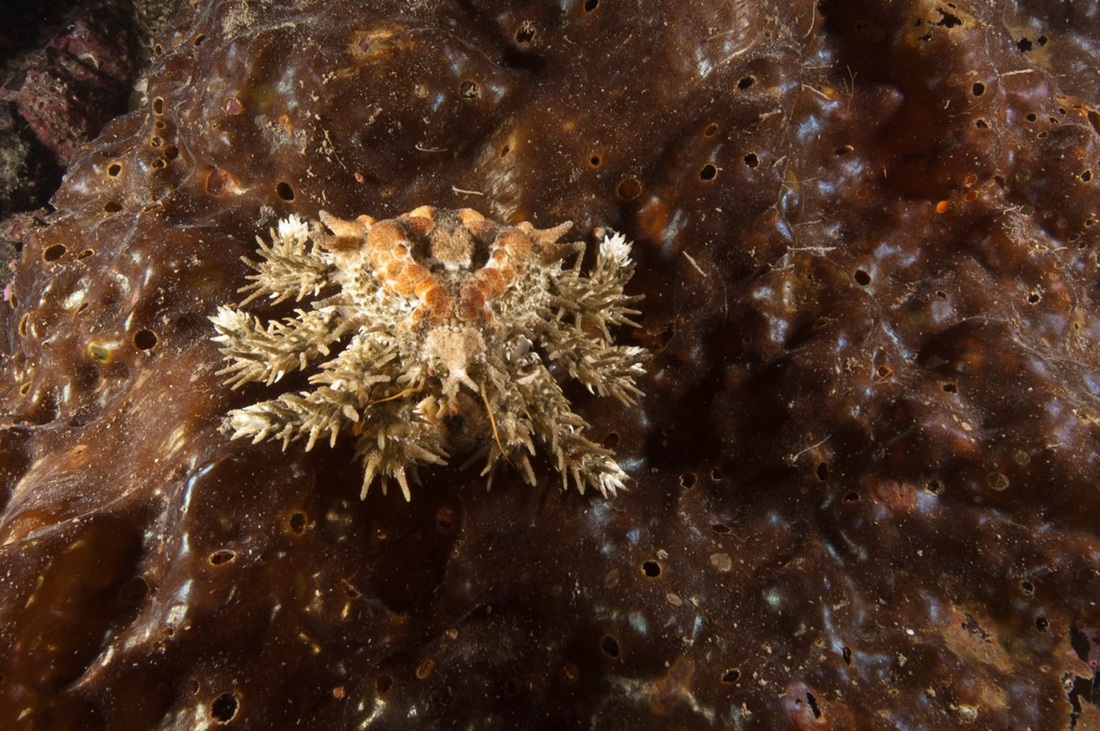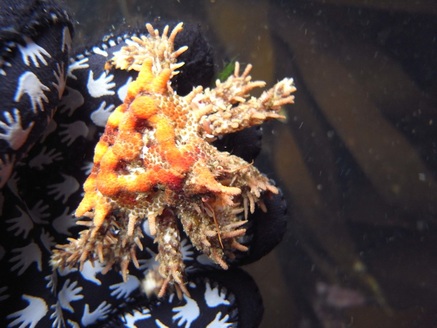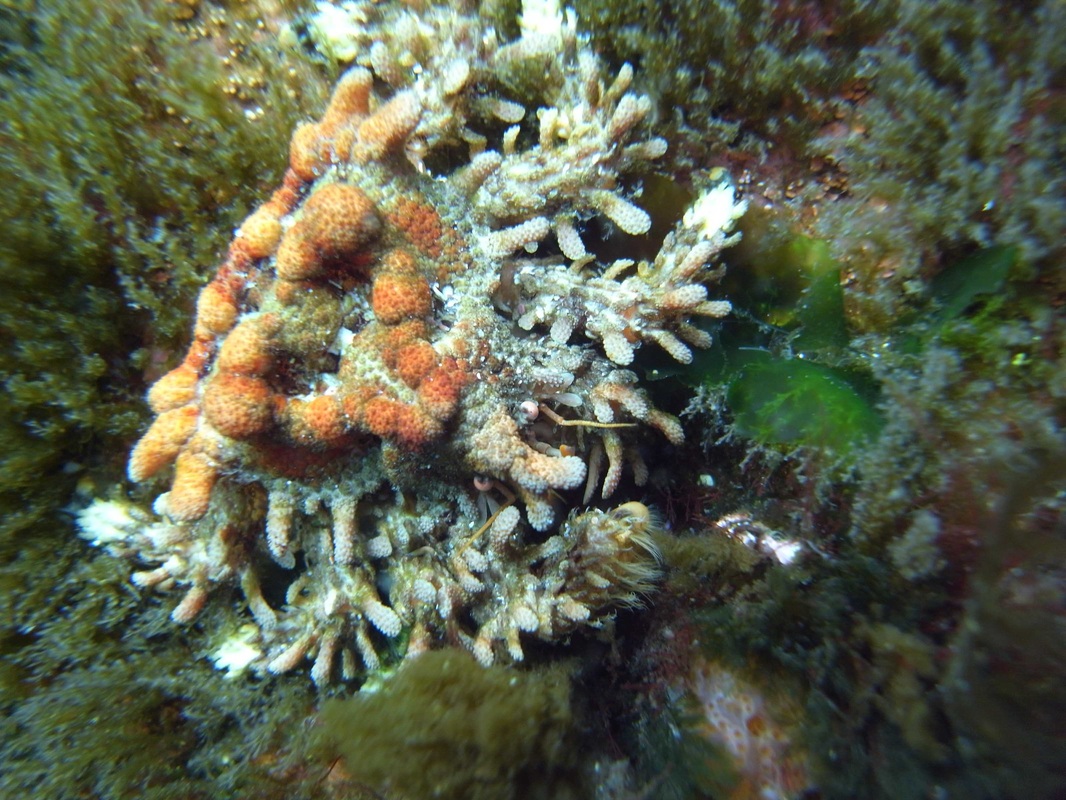Heart crab, heart lithodid, papilla crab, flatspine triangle crab • Phyllolithodes papillosus
{Phyllolithodes = from phyllos meaning leaf and lithos meaning stony}

Photos by Jenn Burt (left) and Mike Munroe
|
Identification
The heart crab is named for the distinctive heart-shaped outline of raised bumps on its triangular carapace. This sculpturing is orange, while the rest of the carapace is grey to brown. The legs, claws, and carapace edge bear long flat spiny projections. White "socks" mark the tips of the legs. The carapace can be up to 10 cm across.
Habitat & Range
The heart crab is most commonly found in rocky current-swept locations in the shallow subtidal, though it has been reported as deep as 183 m. Juveniles, which have less developed spines, may be found under intertidal rocks. The heart crab's range extends from central Alaska to southern California.
Similar Species
The rhinoceros crab (Rhinolithodes wosnessenskii) has a triangular carapace but is easily distinguished by the dense coverage of setae and spines on its legs and claws. Its carapace, while bumpy and sculpted, also lacks the raised heart outline of the heart crab.
The heart crab is named for the distinctive heart-shaped outline of raised bumps on its triangular carapace. This sculpturing is orange, while the rest of the carapace is grey to brown. The legs, claws, and carapace edge bear long flat spiny projections. White "socks" mark the tips of the legs. The carapace can be up to 10 cm across.
Habitat & Range
The heart crab is most commonly found in rocky current-swept locations in the shallow subtidal, though it has been reported as deep as 183 m. Juveniles, which have less developed spines, may be found under intertidal rocks. The heart crab's range extends from central Alaska to southern California.
Similar Species
The rhinoceros crab (Rhinolithodes wosnessenskii) has a triangular carapace but is easily distinguished by the dense coverage of setae and spines on its legs and claws. Its carapace, while bumpy and sculpted, also lacks the raised heart outline of the heart crab.
References
Cowles, D. (2005). Phyllolithodes papillosus Brandt, 1849. Invertebrates of the Salish Sea. Rosario Beach Marine Laboratory. Accessed 11/12/2014.
Harbo, R. M. (1999). Whelks to whales: Coastal marine life of the Pacific Northwest. Madeira Park, BC: Harbour Publishing. P.
Jensen, G.C. (1995). Pacific Coast Crabs and Shrimp. Monterey, CA: Sea Challengers. P. 72.
Lamb, A., and Hanby, B. (2005). Marine Life of the Pacific Northwest [electronic version]. Madeira Park, BC: Harbour Publishing.
Authors and editors of page
Kelly Fretwell and Brian Starzomski (2014).
Cowles, D. (2005). Phyllolithodes papillosus Brandt, 1849. Invertebrates of the Salish Sea. Rosario Beach Marine Laboratory. Accessed 11/12/2014.
Harbo, R. M. (1999). Whelks to whales: Coastal marine life of the Pacific Northwest. Madeira Park, BC: Harbour Publishing. P.
Jensen, G.C. (1995). Pacific Coast Crabs and Shrimp. Monterey, CA: Sea Challengers. P. 72.
Lamb, A., and Hanby, B. (2005). Marine Life of the Pacific Northwest [electronic version]. Madeira Park, BC: Harbour Publishing.
Authors and editors of page
Kelly Fretwell and Brian Starzomski (2014).





